the magdalen
issue 105 - spring ‘24
for students, by students
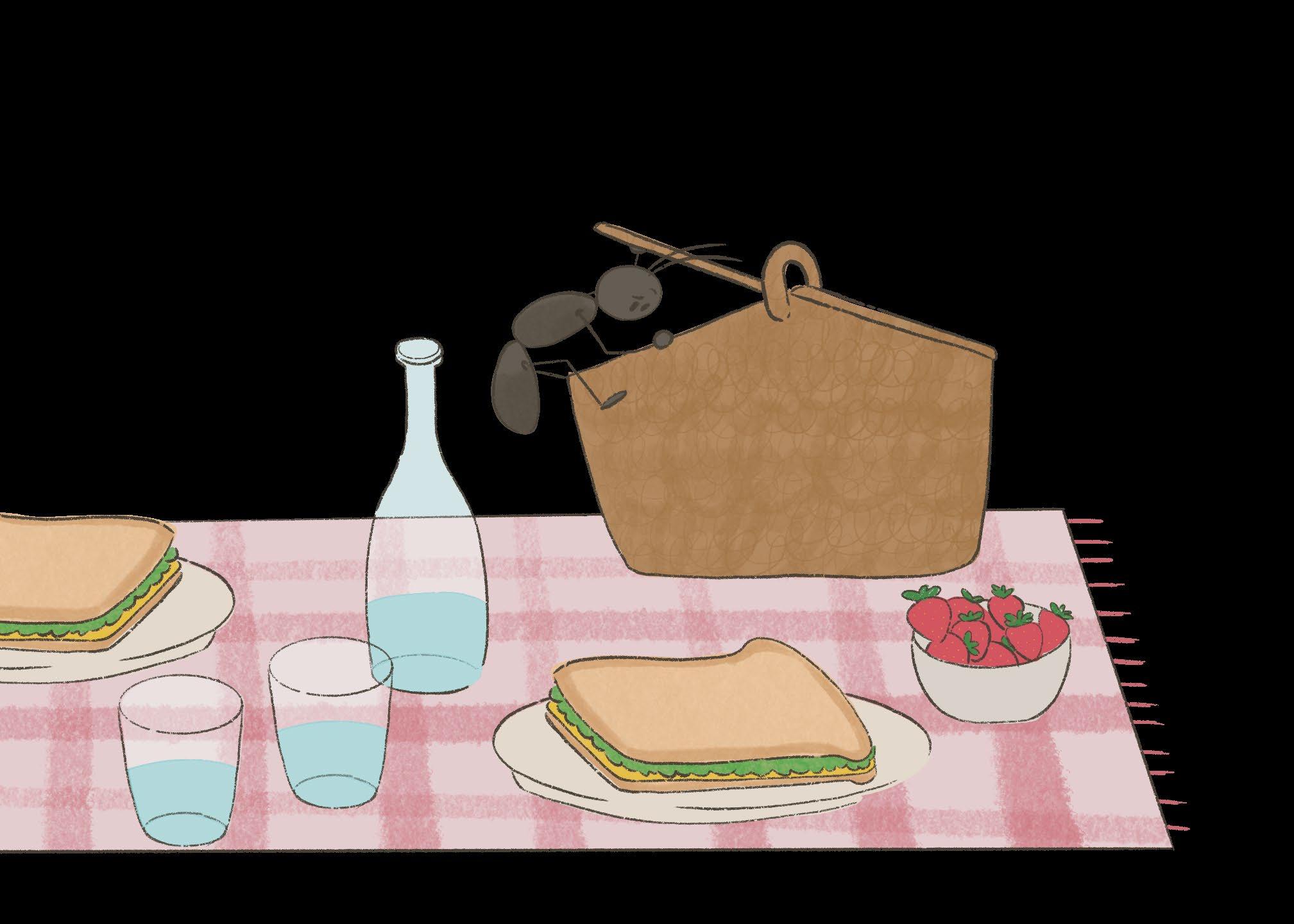
Release your Inhibitions
Confusing but Captivating: A Review of 'The Boy and the Heron' Treasures of the Past Evaluating relationships, advice for coping with being overwhelmed and a reminder to enjoy one's final year at uni.
A review of the latest Ghibli movie The Boy and The Heron.
An explorer visits a deserted kingdom and begins to explore how it came to be so.
Messages from the Senior Team
-Roshni and Mariya Dep./Editor-in-Chief
Hi everyone,
We hope you’re all having a great second semester and that the stress of final assessments isn’t getting to you too much. And, if it is, at least you found the time to pick up a copy of The Magdalen, we have some great pieces this month!
The theme for this issue was “melting snow, longer walks, returning warmth” to celebrate the end of a very very long winter and the start of picnics and beach days- we could all use a few!
Thanks for reading, we hope you enjoy!


Creative Directors
Dear Magdalen Readers,
Whether you're here for the stunning visuals, the thoughtprovoking articles, or just a good old-fashioned dose of fun, we've got something for everyone. So grab a cozy spot and dive in. We want to take a moment to extend a heartfelt thank you to everyone in the team. Your dedication, creativity, and hard work have made this issue possible. Cheers to another round of Magdalen magic!
Warm regards,
- Afia & Luna

@themagdalenmag TheMagdalenMagazine Join our team! If you're a UoD or Abertay student and have a passion for design or writing, we’d love to hear from you! TheMagdalenMagazine @themagdalenmag www.themagdalen.co.uk Connect with us Online!
Feature, Arts & Entertainment
6
Feature
Release Your Inhibitions
Arts & Entertainment
Endogeneity and Magnanimity in Rilke's Letters to a Young Poet
Confusing But Captivating: A Review of The Boy and The Heron
The Power of Photography
Creative Writing
16
Creative Writing
Treasures of the Past February Icicles
To Be Eaten
You Have to Tell Him
Current Affairs
22
Current Affairs
Justice Clarence Thomas: The Evil of Banality
24
Society Spotlight
Save the Children
Sign Language
Lifestyle
Science & Technology
35 Society Spotlight, Lifestyle
Save Me, Student! From Heartbreak to Healing
Keeping Up With The Magdalen
30
Opinions
Is Technology a Friend or an Enemy to the People?
‘Only AI-Generated This Dress So You Could Take It Off’: On The Taylor Swift Deepfake Porn
Yes, You Were
Science & Technology
Maille
Opinions
Words: Rachel Goodman

Release your
It’s time to embrace the ‘main character vibes’.
We’ve all heard the advice, ‘you’ve got to love yourself first’, ‘just let it go’, ‘be yourself’, but at a stressful time, like coming to the end of your university experience and heading out into the world of ‘big-girl’ jobs, it’s easy to forget that this time may well be one of the best chances – probably that you’ll ever get – to follow through on this (I know, incredibly cheesy) advice.
The future lies wide open ahead and that can be daunting – believe me, I understand – but it can also be liberating. Much like many of us did between high school and university,
this new beginning is a prime opportunity to reinvent yourself, to be your true self, to be a better version of yourself. I am by no means suggesting you cut all ties with the person you have become during your uni years (or the years prior), but rather recommending you take the time to consider who you want to be. That may well be the person you are now, there’s no need to change yourself if you are comfortable with you already. If that is the case, go you!
However, if you are bit like me and feel that you have the tendency to feel self-conscious and self-doubt about yourself, perhaps out of shyness, nervousness or anxiety, then maybe
Feature 06
it’s time to release some of those inhibitions. As someone who has been a shy overthinker their entire life, I get it, this is much easier said than done. Over the years, I’ve found ways to help me tackle these feelings – not permanently (nobody’s perfect), but if and when I’ve needed too. As such, it feels appropriate to share some advice as a big stage of change approaches for me and many others: life after graduation.
There have been several points of significant change in my life which have helped me overcome my more reserved disposition. Moving from England to Scotland aged nine was no small feat, and starting at a new primary school more than double the size of my old one forced me to come out of my shell tremendously. It is only really in hindsight that I appreciate how important such drastic change was in encouraging me to become a more confident, sociable person, capable of developing friendships with likeminded people in an entirely new environment. Similarly, starting high school and then university meant I often had to sideline my nervousness to grow as an individual. If you had told eight-year-old me that by the time she was 18 she would have moved into student accommodation with five lovely strangers in the middle of a global pandemic - and that one of those strangers was still her flatmate now - she wouldn’t have even been able to respond because she couldn’t talk in public! That is to say, I’m proud of myself. I am proud of how much my confidence and independence have grown, and I want to help you, gentle reader, feel that way too.
So, here follows some hopefully semi-useful advice about learning to let go of your inhibitions.
A great step you can take to gage how much your inhibitions hold you back is to consider the relationships you currently have, either friendships or romantic relationships. Consider how these
Allow yourself to relax and enjoy just existing. It can be so liberating, even if it only reduces your stress and nervousness momentarily, that’s okay!
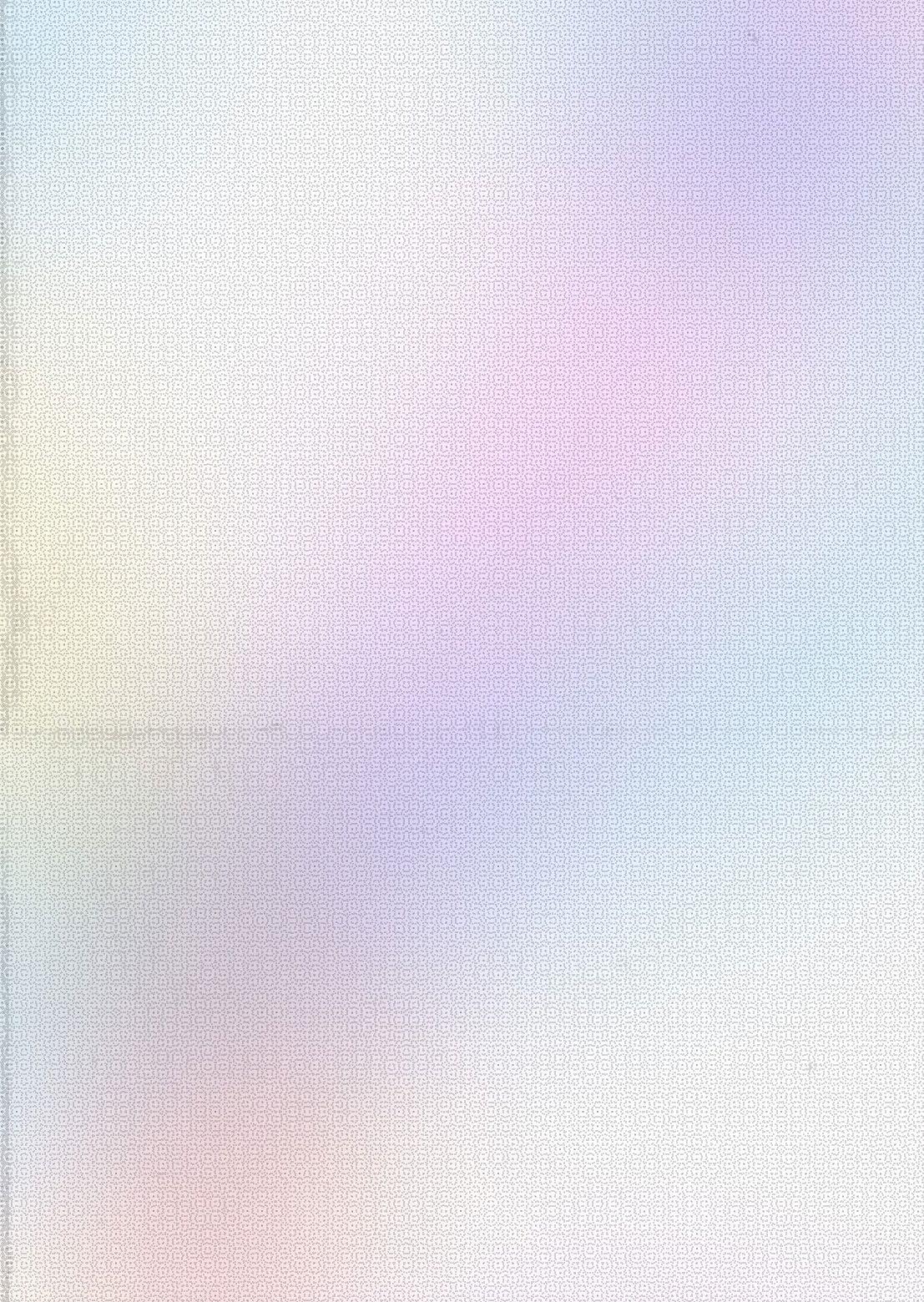
relationships and connections make you feel – do they bring you joy and comfort? Do they make you feel good about yourself? Amazing! Keep them as they are (or find ways to improve them). Hold on tight to these connections, especially as we move out of university and into the so-called ‘real world’! However, if you feel that some of your relationships with others make you feel stressed, self-conscious, diminished, anxious, upset, nervous etc., then it might be worth asking yourself why? For example, it can feel like some friendships are one-sided and that you are constantly putting in more effort than others. You might feel as though a friend takes advantage of you, that they undervalue your kindness and take you for granted. Sometimes you’ve got to be a bit selfish and do what is best for you. If you are feeling this way about a friendship, you’ve got to be proactive, otherwise the dynamic is never going to change. You can try taking an actively ‘selfish’ step; confront your friend and
Design: Luna Jezzard 07 Feature
Words: Rachel Goodman

Go for a walk, embrace the main character aesthetic whilst on a bus or a train, and, please, try and let go of at least some of your inhibitions.
discuss how you feel so both parties can understand the situation and heal it. Alternatively, you might have to be honest with yourself and acknowledge that this type of friendship is more detrimental than fulfilling. Consider distancing yourself from those friendships. You may find that the ties very quickly cut themselves.
Taking this step can be tough, it can make you feel quite guilty or anxious for a short while, but I promise, you will almost always see the rewards; you’ll likely thank yourself later down the line. It can be a weight off your shoulders, like your heart and brain simultaneously letting out a sigh of relief. It’s a hard lesson to learn, especially if you are like me and overthink everything, but one of best things you can do for yourself is to prioritise the relationships built on equity, compassion and support.
After all, when graduation comes and you go on to pursue your post-grad life, you want to be surrounded by the people you love, and the people that you know love you. Especially given that, if we are being honest, we know life isn’t going to be all smooth sailing after uni – if anything, it’s going to feel at times like being a small yacht struck by a tempestuous storm – so, choose your friends wisely. If you are going to be tackling trouble at sea you won’t have time for facades of yourself. Just be you and no doubt any storm that comes your way will soon pass and lead you to smoother seas and clearer skies!
There are also things you can do for yourself, by yourself. I often find when I’m feeling overwhelmed by uni, prospects of the future, or just over-analysing that one encounter I had months ago, that taking the time to ‘recalibrate’ my brain can really help me to relax and let go of inhibitions holding me back. One of the best ways to do this is (drumroll) . . . going for a walk! I know what you’re thinking, but it does work. Taking a slow stroll along a woodland path or powerfully pacing along the Tay waterfront allows you to escape the mundane and look at the bigger picture – it always reminds me just how vast and remarkable the world is and that in comparison to nature, in the grand scheme of things, my feelings of self-doubt and nervousness are really not that deep. I’m not suggesting we diminish our feelings, however, by putting them into perspective, we can find ways to deal with them and hopefully let them go.
Feature 08

Besides, there’s no better way to remind yourself that you are cool, and powerful, and independent, and courageous than by walking to the beat of your favourite tunes, be it the entirety of Taylor Swift’s discography or Mozart’s symphonies. It really accentuates the ‘main character vibes’!
On that note, it can also be fun to imagine yourself as the protagonist (of a coming-ofage movie). Imagining yourself as the main character (or even an important side character if you can’t inflate your ego enough to be the lead) can really boost your confidence – at least it does for me. Say I’m sat on the bus travelling home to Edinburgh or I’m reading a ‘high-brow’ book for my degree in a café, I often feel like I’m omitting waves of confidence and (self-determined) coolness. Even if you aren’t feeling the confidence boost, when moments of solitude like this present themselves, try pausing for a short while to just appreciate life for what it is and what it can be. Look at the landscape around you – it’s not going to judge you or ask you ‘so what are you going to do after graduation?’.
Let your surroundings be your escapism. Allow yourself to relax and enjoy just existing. It can be so liberating, even if it only reduces your stress and nervousness momentarily, that’s okay! That’s much better than nothing at all. It all adds up. Releasing those inhibitions – in whatever quantity –
This new beginning is a prime opportunity to reinvent yourself, to be your true self, to be a better version of yourself.
gives you a chance to catch up with your present self rather than desperately trying to chase after your future self.
Indeed, for many of us in fourth year this is the last chance we have to just be students. Students of a university that is, as we are forever students of life . . . [reader undoubtedly rolls their eyes here]. Truly, we have got to enjoy the time we have left, and of course it’s important to think ahead to the future and consider your options, but equally we have the rest of our post-grad lives to do that. So go ahead, have that study-session with your friends where no study whatsoever gets done! Go for a walk, embrace the main character aesthetic whilst on a bus or a train, and, please, try and let go of at least some of your inhibitions. People will love the more confident, chatty, and unapologetically bold version of yourself. Even if they don’t, you only have to put up with them until graduation. Then, you’re on your own, kid!
But don’t just take my word for it, in the appropriate literary style of bringing things full circle, go ahead and listen to Natasha Bedingfield’s pop masterpiece ‘Unwritten’, which evidently provided the inspiration for this article’s title…
“Release your inhibitions, feel the rain on your skin.”
09 Feature Design: Luna Jezzard
Endogeneity and Magnanimity in Rilke’s Letters to a Young Poet
Among the most salient themes in Rilke’s Letters to a Young Poet is that of what I call ‘endogeneity’ (i.e., procession from within): all manifestation of one’s being, whether external or internal, must proceed deeply from the self, from inner necessity or understanding, and not out of formal, systematic prescription by some system of thought or convention. He who lives like this is the lonely one [der Einsame]. He is the individual who stands in personal, unmediated relation to all things and is, therefore, solitary; no one can help him become who he must be or solve his existential problems for him or prescribe to him how to be. One might say, God does not have grandchildren...
Thus, to Rilke, life in general is like art and poetry. True artistic creation cannot emerge from extrinsic motivations, such as the desire to please people or earn money or to conform to some tradition or style, but must emerge out of a deep, inner urge.
Here are some relevant quotes:
“Your life, up to its smallest and most indifferent hour, must be a sign and a witness of this [inner necessity] drive…. for, essentially, and especially in the deepest and most important of things, we are namelessly alone.” The profundity of this theme is attested

to by its recurrence in the works of other writers. Witness, for example, the following idea found in Frank Herbert’s novel, Dune: “All men must see that the teaching of religion by rules and rote is largely a hoax. The proper teaching is recognised with ease. You can know it without fail because it awakens within you that sensation which tells you this is something you’ve always known.” And, in Twilight of the Idols, Nietzsche expresses a similar (obverse) sentiment:
“What destroys a man more quickly than to work, think and feel without inner necessity, without any deep personal desire, without pleasure—as a mere automaton of duty?”
Now, I do not think this implies that one must “create one’s own truth.” Rather, I think one must, in the Kierkegaardian sense, give one’s own answer to life, even when that answer is the same as that of many other people who have found ‘the way’ as well. What is of relevance here is not the specific content of the answer (e.g., what one ends up believing, though that may matter very much!), but where the answer comes from. Is it a personal, endogenous answer, or one that is prescribed by convention, ideology, or some other system or prejudice or even religiosity? Thus, many people may believe, think, feel, and live the same things, but that very thinking, believing, feeling, and living is still deeply their own (in the sense that they have
Arts & Entertainment 10
Words: Anonymous
appropriated it for themselves, not created it ex nihilo). Vice versa, different people may think or act in ways that are very different from each other, none of which really emerge from themselves: they are, rather, flapping like puppets upon the hand of ideology.
I will also mention a second theme. There is an urge in Rilke’s letters to embrace the human experience and have, as a baseline attitude towards life, a spirit of assent. One must allow for the potential validity of all things; one must reject nothing out of hand. It is an attitude of grace towards the human experience:
“We must accept our being/existence/ experience [Dasein] as much as is possible; everything, even the outrageous, must be possible within it.”
Yet, this might not mean that one must simply tolerate everything. It is rather the case that, if one looks deeply, perhaps even the filthiest lump of dirt has a nugget of gold

in it, a nugget one would have missed if one had just immediately thrown the lump of dirt away. Even so, there is perhaps also, if not a danger, at least a certain hollowness, in falling into a kind of magnanimous assenting to everything. For, if one says “Yes!” to everything, how can one live? How can one orient oneself as an individual? Must one not say, “This, and not that!” in order to become something? It seems almost as if assenting to everything kind of turns you into nothing, like a figure that cannot crystallise against the background. What will one stand on, how can one love?
Another way of putting it is that there are no liabilities: How can one live with direction if there are no liabilities? How can something be meaningful if everything is meaningful? How, then, does one reconcile the desire to approach the human experience with grace while at the same time congealing as an individual? One must learn to dance with all things…

Design: Afia Zaman 11 Arts & Entertainment
Words: Mia Duffy
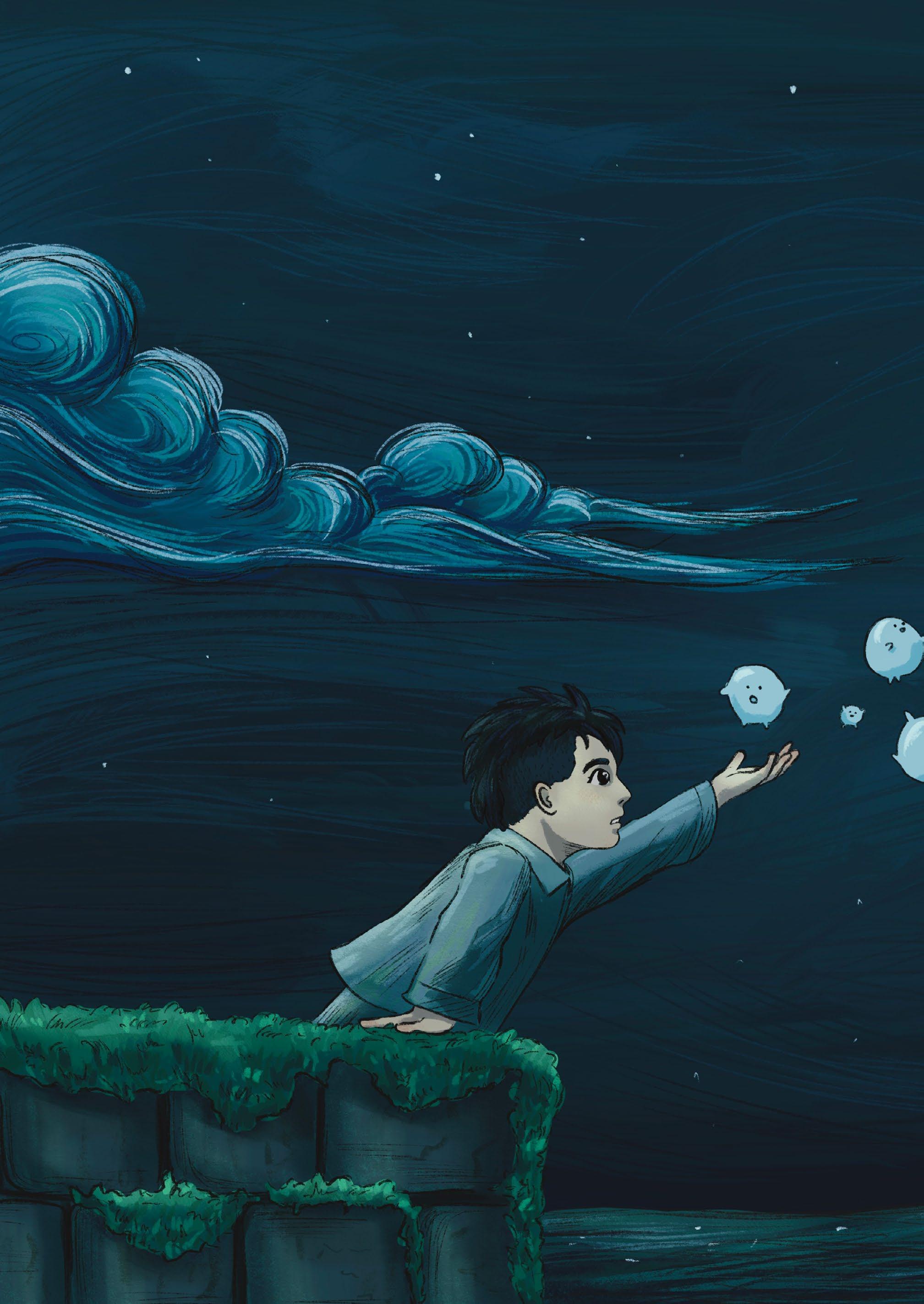
Confusing but Captivating: A Review of The Boy and the Heron
Hayao Miyazaki’s most recent and final film, The Boy and the Heron, was released in December 2023. Protagonist Mahito is a young boy grieving the death of his mother, deceased in a firebombing. He and his father decide to move from Tokyo to the countryside and Mahito soon finds that their new home is very peculiar: he discovers an abandoned tower, to which he feels drawn towards, and a grey heron that will not grant him peace.
I personally watched the English dub, with familiar voices such as those of Robert Pattinson, Florence Pugh, William Dafoe, and Mark Hamill, to name a few but I have heard that the Japanese voice actors are incredible. I would therefore recommend either version!
Arts & Entertainment
12
As always, Ghibli animation is stunning and, in fact, The Boy and the Heron has received an academy award nomination for the best animated feature. Many aspects of the film are reminiscent of previous Ghibli films, such as the adorable Warawara that remind me of Kodama in Princess Mononoke, or Mahito’s venture into a spirit-like realm much like Chihiro’s in Spirited Away.
Most of the story takes place in a spirit world with no set time and where life and death intertwine. There, Mahito meets several characters as he journeys in search of his mother. The plot is a bit baffling, and some may even find it a tad overwhelming and perplexing, but I promise you will not get bored! I would suggest watching the movie contextless and then rewatching
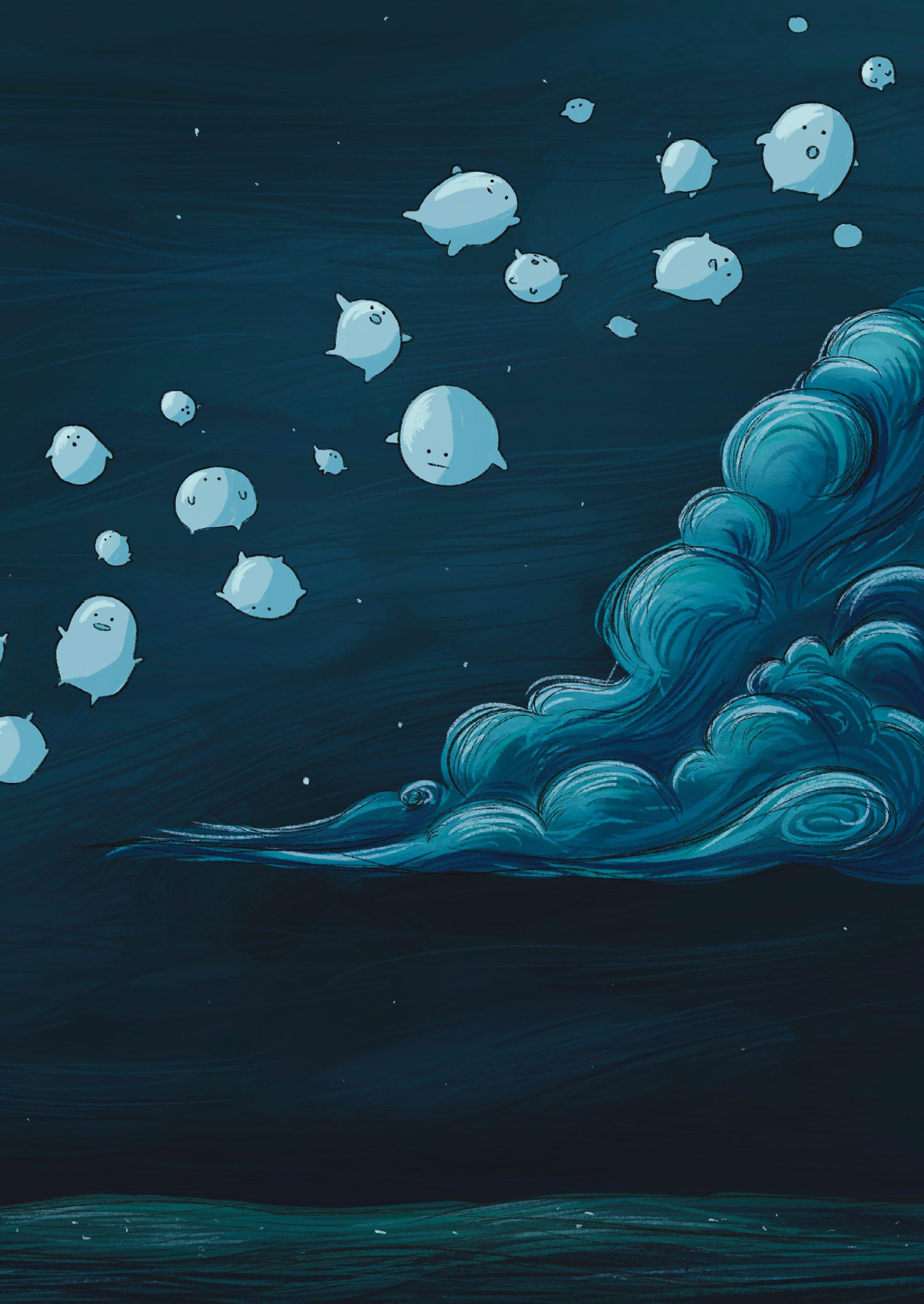
“The Boy and the Heron reminds the viewer of what it is like to be human.”
it after having done some research. I will only say this much: one of the characters is supposed to be representative of Miyazaki himself. This will help you acknowledge the film’s meaning though you do not need to understand it to fully enjoy the viewing.
As a Ghibli fan, I would give the film an 8/10, The Boy and the Heron is best enjoyed by just sitting back and appreciating the story for what it is. Do not get too caught up in trying to grasp the meaning behind it and instead admire the film for what it is, Miyazaki’s most recent work of art.
The Boy and the Heron reminds the viewer of what it is like to be human, knowing that despite all the negative aspects of life there is good that will come from it.
Arts & Entertainment 13
Ariane Legradi
Design:
Words: Chelsea Dalscheid
The Power of Photography


Longer days call for the return of travelling, don’t you think? I have recently visited Vienna, and even though I have been there more times than I can count on my fingers, I always discover something new. This past week, on a rainy Thursday morning, I decided to visit the Albertina Museum. I had not been there in over four years so I was eager to see their new exhibitions, and let me tell you, I was not disappointed.
Before seeing the “American Prospects” photography exhibition by Joel Sternfeld, I decided to do some research about his work. In this specific 1987 project he combines photographic styles from the 1970s which include the New Topographics movement, formalist and colourist photography. The New Topographics document the tension between artificial and natural landscapes in America through black and white photography. Banal structures of postwar America and life in suburbia are its main motifs, pictured in their most bleak and documentary manner. In fact, topographic photographers aim to avoid notions of beauty and emotion. Sternfeld also integrated formalist photography which prioritises visual aspects over subject matter, as well as colourist photography to highlight his moving away from black and white motifs.
Entering the exhibition with such knowledge was thought-provoking as I could pay attention to the above-mentioned aspects and understand what the photos aimed to convey. Joel Sternfeld himself described “American Prospects” to be a “melancholic, spectacular, funny and profound portrait of America with latent socio-economic criticism.” Most photographs portray the everyday lives of people in suburban America. In “Swift River,” Sternfeld captures three women bathing in the river, without them explicitly posing for a picture. “Gresham, Oregon, June 1979” displays a seemingly quiet street in Oregon overpowered by the presence of a moving van. At first glance we see the van, we peek into the garage and see the furniture being moved. However, a second glance shows us a woman nursing her baby sitting on one of the sofas that are about to be loaded onto the truck. This is a perfect example of the subtlety of his portrayal of everyday life. The street displays the subdued and neutral colour palette present throughout the whole exhibition, giving it a 70s flair.
Sternfeld also makes use of irony and engages with socio-economic criticism in his work. “McLean, Virginia” was taken in December 1978 and captures a fireman buying a pumpkin at a farmer’s market only a few


Arts & Entertainment 14






meters away from a house burning down. The nonchalance with which the fireman looks at the pumpkins he wants to buy while there is a tragedy happening in the background is truly shocking. Upon further research I found out that the fire was a practice run, and that the fireman was on a break. Nevertheless, it still caught me off-guard, and the image creates an interesting juxtaposition between a daily mundane task and a tragic event.
Joel Sternfeld doesn’t shy away from portraying tragedies, and this enforces his association to the New Topographics. Similarly to them, he avoids sentimentality as emphasized by two instances in this particular exhibition: two photographs explicitly show the death of animals. One of them is called “Approximately 17 of 41 Sperm Whales that Beached and Subsequently Died, Florence, Oregon, June 1979” and it portrays the dead whales lying on their backs in bloodied water. Personally, this scene affected me the most due to its bleak representation as well as the title, so impersonal and factual, even though it is a rare animal species that has found its unfortunate end on the beach. Along the same lines, “Exhausted Renegade Elephant, Woodland, Washington, June 1979” sees an elephant that has escaped and is now at his wit’s end.
Last but not least, the representation of “normal” people marvelling at technological advancements like The Space Shuttle Columbo’s landing in March 1979 or the U.S.S Alabama at its home port in September 1980 are scenes you normally wouldn’t see in an exhibition because of their mundaneness. You also wouldn’t expect to see “Domestic Workers Waiting for the Bus” in remote Atlanta, yet here the intention is to highlight the brilliancy of colours.
Sometimes, Joel Sternfeld captures moments which appear too banal to be framed, although they express a town/ country’s atmosphere the most accurately. Posing for a picture isn’t real, and therefore catching people off-guard is what made his photography stand out to me, although there were several scenes where you could tell that people were not happy, but that too is a part of life. Poverty, desolation, economic depression, and death are all to a certain degree expected in life, and Sternfeld has realistically managed to convey it, with his use of colours, his motifs, and his observation of suburban America. I highly recommend visiting this exhibition if you ever find your way to Vienna (arguably the most beautiful city in Europe)!


Design: Afia Zaman 15 Arts & Entertainment
Words: Lara Luyts

Treasures of the Past
This kingdom must have been beautiful, once upon a time, the traveller thinks as he walks up the stairs. Tiny rocks loosen under his feet, fall with a clatter. The sound is deafening in the dead quiet of the morning, and he can’t help but flinch.


“The people who lived here were said tobe clever – clever enough to survive in the heart of the desert for centuries, immune to the scorching heat of the sun.”
The sun is still rising, and a cold wind bites at his skin. He pulls his cloak tighter around himself, his eyes scanning his surroundings for valuables. He’s heard stories of the splendid kingdom that, from one day to another, became a shadow of its former self. Everyone has. When he reaches the top of the stairs and looks down at the view, he can imagine this place overflowing with people, scurrying around like ants. There are remains of stone houses, winding paths that are obscured by fallen rocks. A large open space that could have been a marketplace long ago. The people who lived here were said to be clever – clever enough to survive in the heart of the desert for centuries, immune to the scorching heat of the sun.






Creative Writing
16
 Design: Cameron Tucker
Design: Cameron Tucker
Treasures of the Past
The traveller turns back to the building ahead of him and eyes the structure warily. There’s not much left of the castle; parts of the stone walls are crumbled to dust and most of its towers have collapsed. It looks like it could fall apart at any moment, but he’s gotten this far already and isn’t planning on turning back now.
The theories of what happened to the kingdom go as follows: a disease spread through the population and killed them all, their bones now buried under the sand; the royal family wronged an old witch and unleashed a horrific curse on the entire kingdom; a tragedy forced everyone to pack their things and leave.
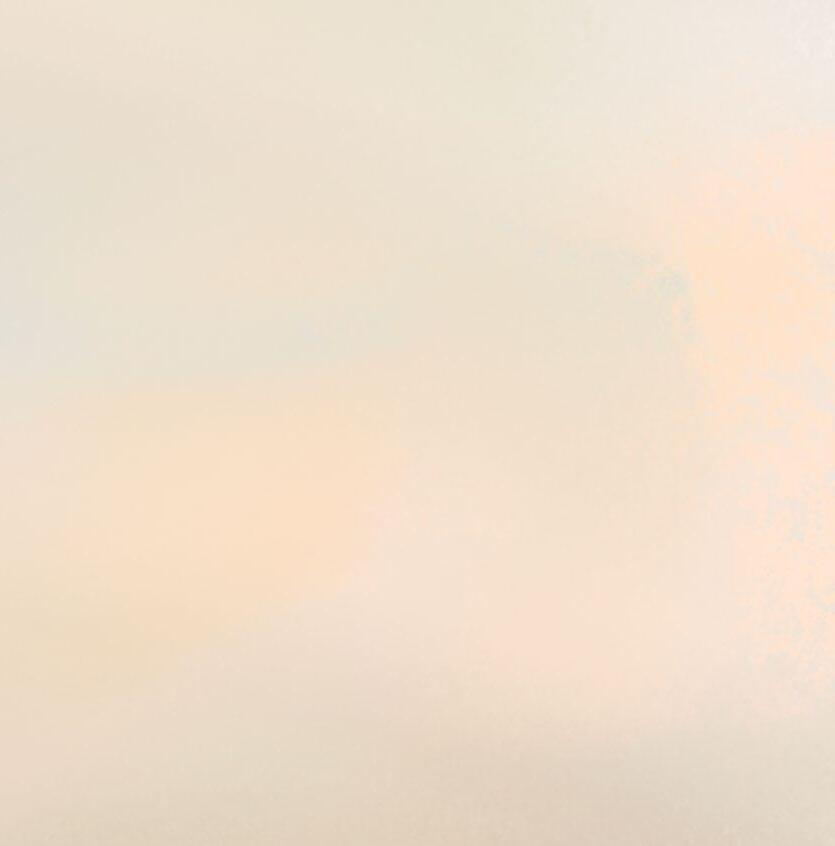

The traveller has no theory. All he knows is that he doesn’t believe in curses, and that no one in a hurry to escape will pack all of their riches. He remembers what his mother told him when he was young, long before this place was deserted: “Never have I seen a more beautiful place. The castle shone like a diamond casting light on the kingdom from above, and it was even more stunning inside. All the riches you can name, they had it. Even the roads glistened with gold.”
He casts one last hesitant look at the crumbled towers. As long as he’s careful, the place shouldn’t come crashing down on him. Besides, he has nothing left to lose, and a fortune to gain. With that thought in mind, he pushes open the heavy door to the castle. “Never have I seen a more beautiful place. The castle shone like a diamond casting light on the kingdom from above, and it was even more stunning inside. All the riches you can name, they had it. Even the roads glistened with gold.”


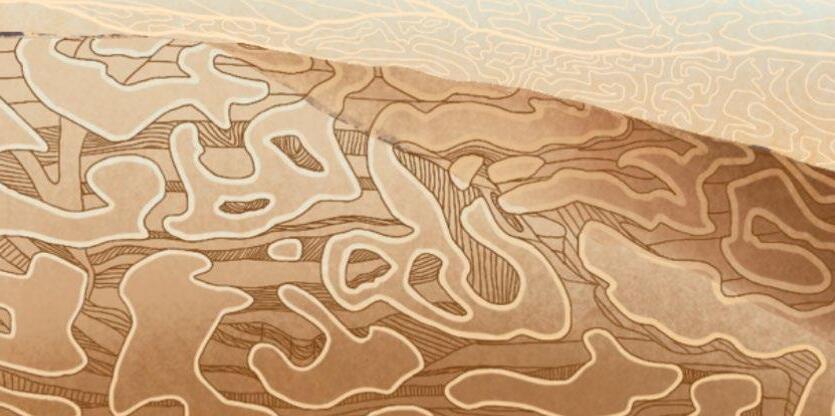
Creative Writing 17
Words: Clare Havertape, Photography: Katherine Donaghy, Design: Cameron Tucker
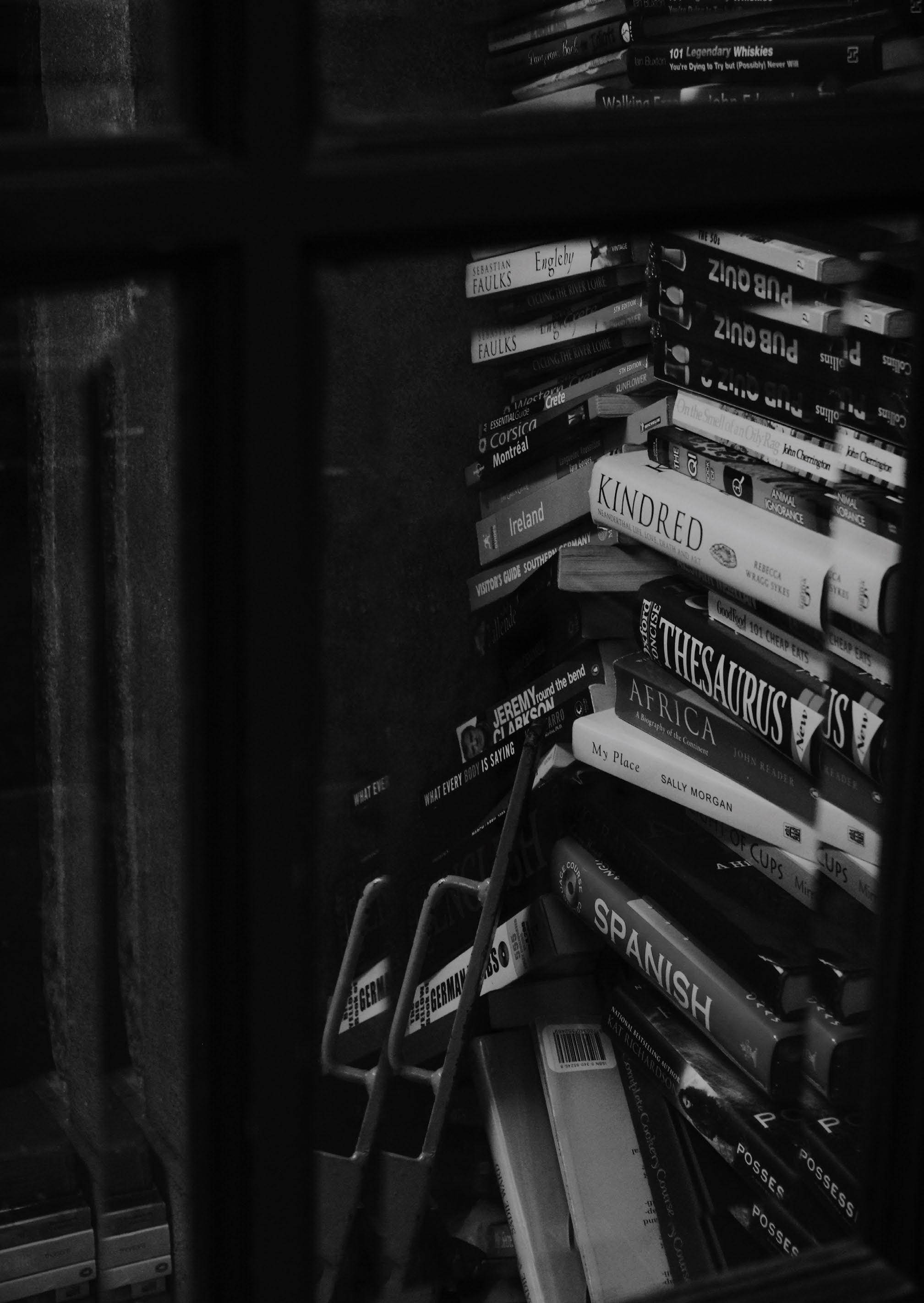
February Icicles
“Winter gave us each other unconditionally“
Winter gave us each other unconditionally. Four months to bathe in laughter in the bookstore, to light an eternity’s worth of fires when the sun went to sleep. We read books until we followed in that slumber, tucked away against the corner of the couch near the philosophy section. But it is March, and time is thawing. I wish ice still tranquilised all my surroundings, because then maybe you would’ve never been lost, if the snow never melted.
The bookstore is so lonely without you here. I look out the window sometimes, to see if you’re strolling up the little cobblestone path—remember when we chipped away at the ice in amongst the crevices of the rocks, trying to clear it so we’d have a safe path to our haven? I fear that when the grass begins to peek through those rocks, that is when I will forget the sound of your voice. I’ll forget how the snow turns the world to frost and, and how we sat by the fire while the outside froze us in our own little bubble of our own little time. We were so warm inside. And you used to always let me make the fire, and now I can’t, because you’re not here to tell me that it needs to be done.
I don’t want more snow to melt in the gutters of the bookstore, I don’t want the sun to shine through the windows, letting me know that the fire isn’t needed anymore. I fear when the forget-me-nots finally bloom in March, that I will forget you.
“In the middle of winter waiting for us again”
When winter dies out eventually, will I stop dreaming of us in that place? We spent the night there before you disappeared, and now every shelf seems stranded, each book, its soul ripped out. The couch lingers for you, and I’ve cut up some firewood just in case, even though the temperature is rising.
Where did you go? Is winter only a daydream for you, was the snow too alienating? Was the bookstore only a sanctuary for when the world halted with ice? Just in case, I’ll stay there forever, stuck in the middle of winter, waiting for us again.
Creative Writing 18
Words: Sage Cormack, Design: Katy Blair

CONTENT WARNING: VIOLENCE AND CANNIBALISM
I am made in a flurry of practised motions, an amalgamation of freshly sliced bread and layers of pastrami. There is nothing significant about me, I am one of many. But despite the odds, here I am, alive. Whoever created me is not aware of my consciousness. It irks me. What was I made for anyway?
It is not long before I am met by a room of hungry expressions. Men and women who devour greedily, the evidence of the ones before me being the crumbs on their plates and the spit flying from their mouths.
This room, a blur of movement and animated conversation, fills me with dread.
Fear grips me as a woman, skin soft and glistening, approaches, pointing in my direction.
This is not fair. Surely, I was not made for this? To have existence paraded in front of me while I am to be torn apart and defiled. In this moment, I experience a harsh reality; I am going to die. And I simply cannot accept it.
The plate carries me delicately as she finds somewhere to sit. We observe each other as
she gets comfortable at her table. Humming as she picks me up, her mouth widens to take a bite. If I could wail and beg for mercy I would. But I can’t. I’m just a sandwich.
A gut-wrenching screech assails us, and to my horror, these men and women are turning on each other, blind with rage. I am flung to the floor as this woman is all but piled on by men with frothing mouths and bloodshot eyes.
These men tear at her body, flesh ripping like a ripe peach as she screams. I can do nothing for her, and I’m not sure I would if I could. This fate that she has met was meant to be mine. Does this woman understand the fear I felt, having thisunfair end thrust upon her?
I fear I am next, but such an end never comes. These people, they eat each other now. They do not need me.
And yet, despite this revelation, I feel disappointment. The way they sink their teeth into her skin and caress her innards between their fingers, is almost sensual. Loving. I can feel their desire for her as they consume until nothing is left.
I am forgotten, and suddenly there is a fate worse than death.
!
Creative Writing 19
Words: Jasmine Patel
You have to tell him
CONTENT WARNING: SEX
It is always awkward to wait outside a building for someone. I busy myself by fiddling with loose threads on my jumper and pretending to check my phone, knowing full well I have no service, praying the next four minutes will pass quickly. I pace around the florists, peering in buckets full of sprightly flowers I have never seen before, inspecting each one carefully until the sour-faced owner of the shop emerges to inquire if I need any help. Two minutes left. I consider crossing the road just for the sake of it. There must be a better way to arrange meeting someone. I kill the next forty seconds or so by pondering alternative ways to pick somebody up from their place of work. I could try entering the building, but that somehow seems worse than these awkward minutes monopolizing the side of the street. A sudden surge of self-consciousness shoots through me, and I find myself checking my reflection in a dusty car window. The ball of nerves lodged under my ribs shifts slightly. And then suddenly, there you are, squinting slightly from the sharp sunlight with a bag of recycling slung over your shoulder. You give me a hug, the recycling bag jostling to be included in our embrace.
After a few minutes of walking and talking, my nerves untangle, and I relax into your rhythm. We walk downhill, the give and take of our conversation keeping pace with our footsteps. I’m surprised at how quickly time passes; we flit between shops and criss-cross through the city to share our haunts with one another. You draw in my notebook, and I think of the other side of the page on which your hand rests, scrawled with clumsy musings on you. I feel calm as you tell stories, inwardly giggling at the rise in volume as you get more enthusiastic, your still unfamiliar accent ringing across the park. In the cinema, I inch my hand as close as I can to yours while still maintaining plausible deniability. I let our shoulders brush and I revel in the giddy uncertainty of what is to come. You interest me, I’m curious about you. You invite me to your “flat”, a play on my accent, but I don’t notice the joke. My words in your mouth flow so naturally.
We are quiet on the train, both caught up in separate daydreams which we punctuate with conversation. I pass my stop and pay attention to the houses I’ve never passed before: uniform, uninspired replicas of each
Creative Writing 20
!
other, but not without charm. A brief hello to your flatmate as you pour the drinks, then you lead me to your room. I look at the art you’ve chosen to display, your guitars, mid-century nightstand, the muss of your bed, abandoned crochet projects and discarded outfit options, and I decide to like you even more. I seat myself on the corner of your bed, fiddling with a handmade throw blanket, and you kiss me with surprising speed and force. The gracelessness of it takes me off guard, but I guess there is no reason to be shy when we have spent eleven hours in the warm blur of each other’s company. You are an unfamiliar shape against me, I’m not quite sure where to place my hands and legs, but I get used to twisting into you pretty quickly. I whisper into your mouth that I didn’t expect this, not a lie, but definitely far from the truth. The tangle of nerves is back again, and my brain is combing through the scenario at 100 miles per hour. You have to tell him. Specific details stood out to me: the way you clasped my hand to your
waist, your hands clumsy in my hair and an innate inability to match one another’s pace. Obvious reminders that you are new, that I don’t know you. I’m afraid to hurt you by pressing against you in the wrong way. I’m just as afraid that you will hurt me.
I’ve always assumed people can read my thoughts just by being in the room with me, something I tell you in the afterglow. There have been times I’ve shut doors in fear of my thoughts leaking into communal areas of a living space. I’m tracing patterns on your jeans. The last train slithered past your window an hour ago. I feel the urge to confess to you, and I dissolve the lazy haze settled over us. The forgiving mist of the unknown pulls back. It’s out in the open, and the warmth of day and the moment have faded. Your curiosity is respectful, but that does nothing to remedy my anxiety. I walk home in the cold, in the dark, retracing the path of the last train.
Creative Writing 21
Design: Joshua Harris
Words: Liam McClurg
Justice Clarence Thomas: The Evil of Banality S
ince reading political theorist Corey Robin’s latest book The Enigma of Clarence Thomas, I have become interested in the titular Supreme Court Justice. The existence of a Republican black nationalist on the Supreme Court, and the fact it goes unmentioned, is baffling. However, after careful research, this piece is less an elaboration of why I found it interesting and more an explanation of why it is not particularly revolutionary. Remarkable? Sure, but not exciting.
Much of the press around Thomas centres on either his failure to ask a question in court for 10 years, or the highly publicised sexual misconduct accusation that nearly prevented him from taking his seat. Less remarked upon are his seemingly contradictory politics around race. He makes decisions that read like a blistering sermon from a civil rights activist about the racist implications of abortion rights. There’s evidence to suggest that Thomas, at one time, saw himself as more radical than Dr King. He quoted Malcolm X while serving in the Reagan administration, ‘this ain’t your granddaddy’s conservativism.’ Or is it?
Thomas frequently mentions his humble beginnings: from segregated rural Georgia to the longest-serving justice on the US Supreme Court, it is quite a climb. But for conservatives, ‘humble’ tends to mean ‘not elite’. While it is true that Thomas did grow up in the Jim Crow South, he received a private education. It may seem irrelevant, but when Thomas speaks of the intra-black racism he received for looking ‘too black,’ this was at a school for the elite in his community. This feeling of being out of place, in both white and black institutions, would come to colour his worldview.
A vociferous opponent of Affirmative Action, Thomas was frequently on the receiving end of ‘liberal largesse.’ He considers it patronising for black people to be, as he was, welcomed into elite institutions. There is a feeling that people like him cannot fit in. Thomas does not see us all as part of one large community. Black people can only go to Harvard, as he did, by the allowances of white people, creating a power imbalance. He does consider black people his community in the sense that they have a unique experience of discrimination but ultimately sees politics as a dead-end for helping them.
“Black people can only go to Harvard... by the allowance of white people”
Now here is what’s interesting but ultimately deflating about Thomas. He is a Reaganite conservative who acknowledges structural racism. In that sense, he resists political analysis, he is a radical, and on the hard-right, but not on the existing radical right. Nor is he in the mould of Ben Shapiro or Dinesh D’Souza, who contend that the liberals are the real racists, but discount indirect forms of racism. Thomas believes in institutional racism but finds liberals more guilty of perpetuating it than the right. He will, for example, compare the Jim Crow South favourably with the North. One can easily see the trap I fell into here, Thomas’ Unique Selling Point is certainly effective.


Current Affairs
22

and opposes LGBT rights. He opposed interracial relationships before marrying the white Republican operative Ginni (a QAnon believer). Women’s Rights, Social Security, and Climate Change legislation are all enemies of progress to Thomas. Think of every ‘I used to be on the left’ activist, politician, and journalist. The novelty lies entirely in his unorthodox rhetoric.
The Black Nationalism of Clarence Thomas is unique; however, it folds neatly into Albert Hershman’s taxonomy of logic in The Rhetoric of Reaction: Perversity, Futility, Jeopardy. The Futility thesis, put forward by Hershman, states that attempts at social transformation will not work, they will simply fail to “make a dent.” In other words, tackling systematic racism through political action is an act of futility. Thomas is also fond of the Perversity thesis: Any attempt to improve features of the social order only serves to exacerbate their condition.
is itself an example of institutional racism. Can something be both futile and achieve the opposite of its intention? Hershman notes that when Futilitarians are not “quite comfortable with their argument…they look to the perverse for reinforcement, adornment and closure.” What at first seems revolutionary fades into mundanity.
And thus, I stumbled upon the reason no one mentions Thomas’ politics – they are just not that interesting. I have come to understand Thomas as more of a standard reactionary than the new American right. He is every Reaganite conservative; indifferent to injustice or cruelty, waging a war on the world on behalf of the capital. There is no Trumpism in Clarence Thomas, no collectivist desire to burn it all down. All that remains is a radical past and rhetoric deployed against white liberals.
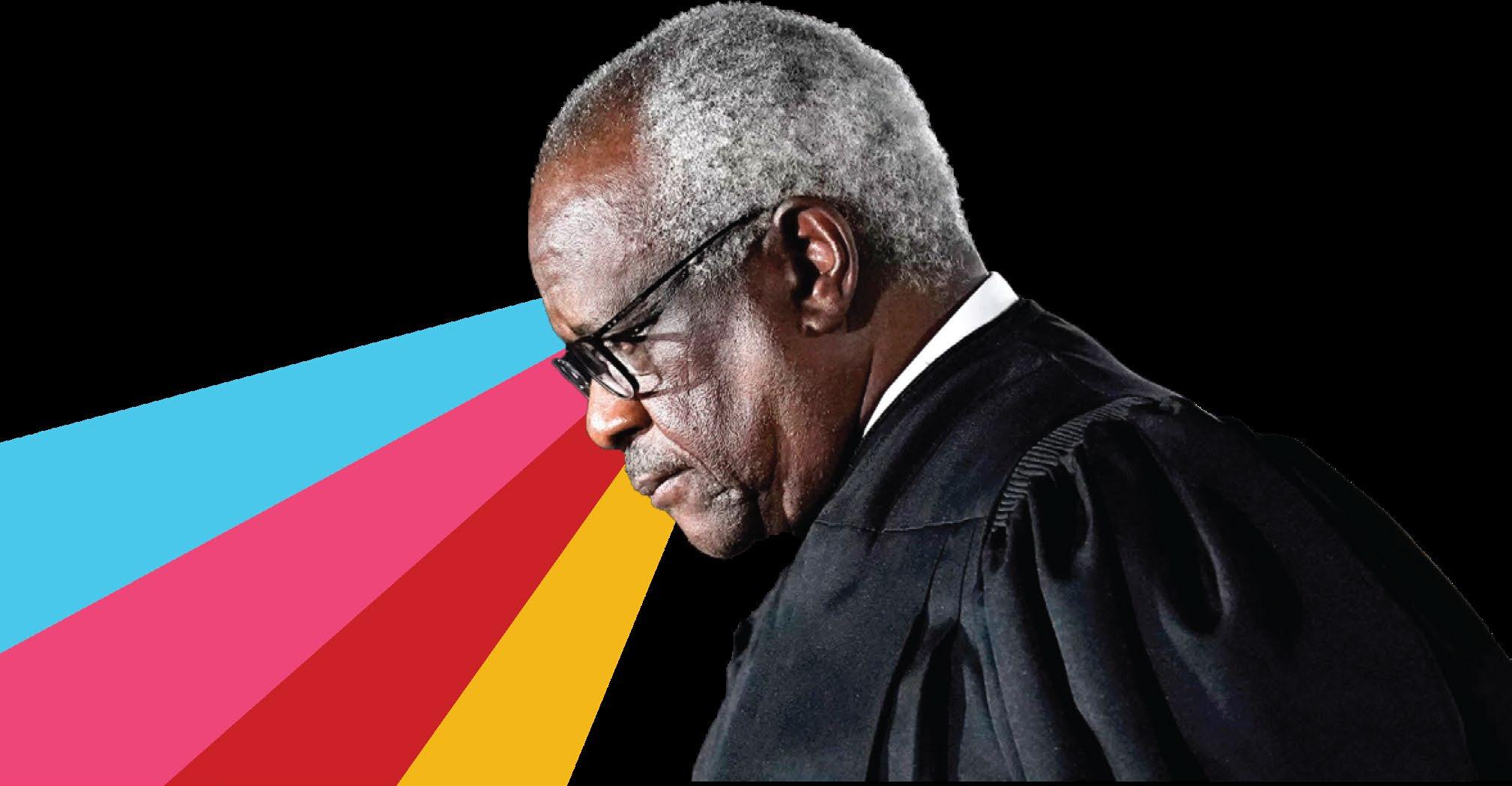

23 Current Affairs
University of Dundee Save The Children Society
Comprised of no more than 25 members, the Save the Children Society is a small but mighty unit. Though a small society, we are an ambitious group with the collective vision of a better future for all children. Through hard-work and collaboration, we turn this ambition into positive change. Since 2022, we have raised over £3500 and were awarded DUSA’s most charitable society in 2023.
So, what does the society do and where does all that money go?
Save the Children Society aims to educate, fundraise, and advocate for children’s issues on behalf of the charity. For every £10 raised, we can provide 6 midwife birth kits to improve the safety of childbirth, or 58 food sachets to save a child from malnutrition. The charity, and by extension, our society, exists to help every child get the future they deserve. Our work makes a real difference in the lives of children all over the world, but it can only be done by bringing passionate and like-minded students together.
Society meetings are the beating heart of our organisation. While the kettle boils, our creativity runs rampant as we think up our
next big fundraiser. Listening to the flow of ideas fills the air with a tangible positivity that is truly inspiring. These meetings remind us that generating positive change is impossible without passion and to watch that pour out of each and every society member makes us proud of what we have accomplished – and excited to do more. From pop-up thrift shops to pub quizzes at your local, our society offers something for everyone. Even an upcoming charity gala…Each fundraiser we hold comes with a package of emotions and challenges. What may appear to be a stressful test to our problem-solving and organisation skills, is also and foremost an opportunity to grow and improve as a unit. We always make it through together, learn something along the way, and contribute to a cause we deeply care about. If you are passionate and eager to learn new skills, please consider joining. We are always looking for new ideas and with a big chunk of our committee members graduating this year, we are looking for a new team to take the reins. If you still need convincing, pop along to the Tinsmith Pub Quiz every other Monday to get to know our lovely members.
Society Spotlight 24
Jezzard
Words: Save the Children Society, Design: Luna
Words:

Sign Language Society
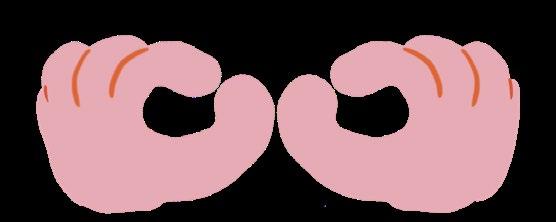


The Sign Society is a great place to make new friends whilst learning a valuable life skill. We learn, teach, and discuss d/Deaf issues, raise money for charities that support the d/Deaf community, and spread awareness, all whilst having fun!
Our society has previously won the DUSA Most Progressive Society award, and everyone is welcome to join. We meet in Dalhousie every Tuesday between 6-7 PM to learn the BSL basics. Two of our committee members have Level 1 qualifications in BSL and they offer friendly, supportive teaching for the society.
We also run fun events such as bingo and pub quizzes with sign interpretation, it gives us all a laugh and a much needed break from the classroom!
We hope to normalise sign language and get more people included in every day conversation, and we would love for you to be part of the change!
You can find us at @uodsignsoc on Instagram, check us out and see you soon.
Society Spotlight 25
Sign Language Society, Design: Beth Millar
Words: Eshar Bola
Save Me, Student!
From Heartbreak to Healing
I am not sure that there is a ‘best’ way to move on after experiencing heartbreak, as it is such an individual experience which varies from different relationships and personalities. However, no matter how good or bad you remember the relationship it is always hard to experience. In fact, it can sometimes be harder to recover from leaving a toxic relationship as your nervous system could be used to the rollercoaster ride of emotions, so it takes some time to adjust back to normal life. I do have some tips that can hopefully help during this difficult period.
The first is to go no contact with your expartner which includes muting or blocking all social media and messaging platforms. This is because it is hard to heal from heartbreak when your ex is still in your life and you are thinking about what they are doing. It is time to focus on yourself and your own healing. Obviously, we are all human so don’t worry if you slip up, just resume the no contact after.

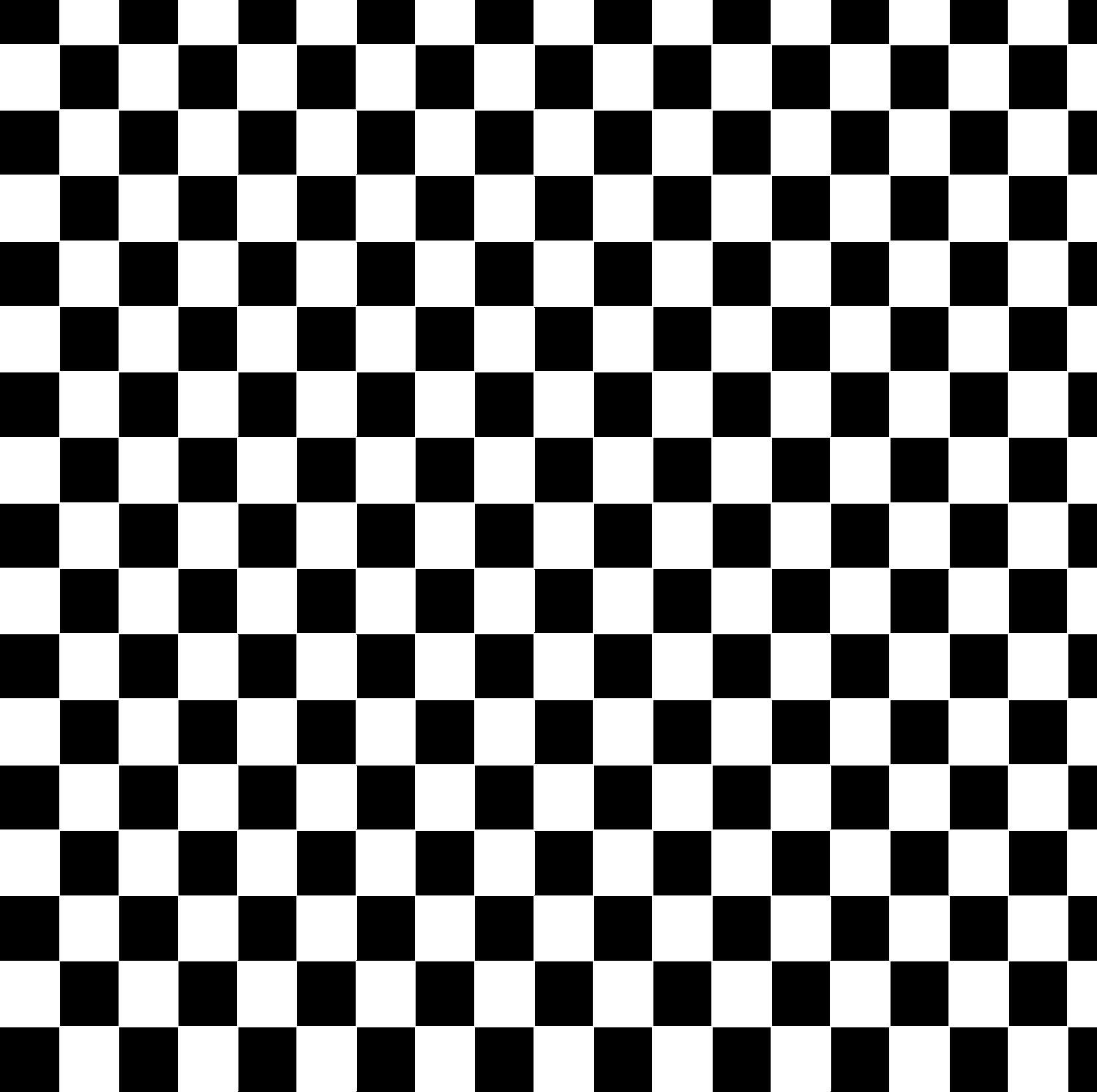
Just remember you had a full life and were whole before your ex and you will have that again. Transitioning through a breakup can be difficult, but in a couple of months you may even see this as a blessing.
Depending on how long the relationship was you may start missing the routine that you had built together. It is important to make your own routine so that you are still managing to focus on the things you need and like to do. If you end up with more free time than you had before, you can try out a new hobby or join a society or sports club. It is also a time to reach out and lean on your friends, so start making plans with them to help keep your mind off it.
Lifestyle
26


Lastly, it is important to actually let yourself feel and process your emotions. It is okay to cry and blast heartbreak anthems in your room if that helps you feel better. Journalling can also help you work through all your feelings, especially if you are not wanting to talk to your friends about it. You can also use journalling as a way to write out all the things you would want to tell your ex without actually having to. This can sometimes help as it feels like you are releasing all those thoughts without having to send the messages and break the no contact rule.
Just remember you had a full life and were whole before your ex and you will have that again. Transitioning through a breakup can be difficult, but in a couple of months you may even see this as a blessing. Focus on your healing and getting through this hard period.
The first is to go no contact with your ex-partner which includes muting or blocking all social media and messaging platforms. This is because it is hard to heal from heartbreak when your ex is still in your life and you are thinking about what they are doing. It is time to focus on yourself and your own healing.
Lifestyle
27
Design: Luna Jezzard
...continued

the magdalen Keeping up with

Hey everyone we hope the semester is going well! Here's a bit of what your favourite Magdalen team got up to!








Lifestyle
28




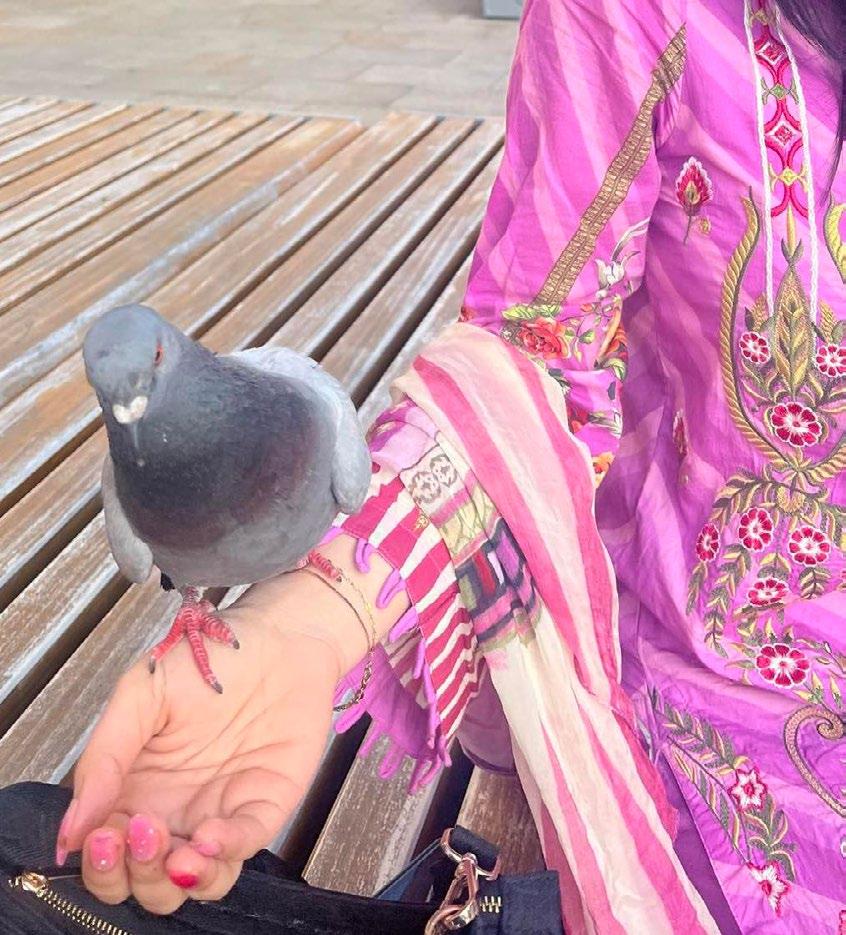









29
Words: Sofia Yevmenkina
Is Technology a Friend or an Enemy to the People?
CONTENT WARNING: SUICIDE, MENTAL HEALTH
Fifty years ago, people couldn’t imagine things like the internet, electronic devices, and social media would exist. To communicate, they sent letters for which they needed to wait for weeks. People interacted mostly with locals as it was difficult to find others outside of their hometown.
Today, we can’t imagine our lives without the internet and social media. They are the important tools we use to learn, rest, and communicate with friends all over the world. Before people read paper magazines and newspapers. Now, the world is increasingly digitalized.
However, with the appearance of new technologies, more and more people are getting concerned about the influence on our mental health, especially the younger generations. For the last ten years, there have been such cases as child sexual abuse, distribution and sale of drugs, extortion, and others through social mediawhich causes psychological traumas among teenagers, eventually even encouraging some of them to commit suicide.
For over a decade, there have been many attempts to ‘fight’ against social media to stop the spread of adult content that
can affect mental health and the safety of children. Last month, on 31 January, this issue was discussed at the US Senate meeting with CEOs of TikTok, Snapchat, Meta, X, and Discord. According to the chairman Mr. Durbin (2024) “online child sexual exploitation is a massive crisis in America”. Not only is America under the influence of the media, but the whole world as well; this issue is of high importance. Social media was created to produce happiness, to help people communicate, play, and share news with their friends.
Now we are facing the question: should we ban all social media to prevent teenagers from finding inappropriate content, or should we create regulations that would help control these massive corporations and hold them accountable to the law in such cases? That’s basically what the US Senate is willing to do: to make companies pay, quite literally, for the creation of products which can be used to harm people.
It’s important to remind ourselves that suicide and drug issues existed before the Internet. Pre-internet, it was easier to hide the evidence as people tended not to talk about the things they were going through. Today, if something bad happens, people will know such information from social media
Opinions 30
!
right away. So, was this problem really created by huge corporations, or has the way of committing crimes just changed?
There is a belief that social media and violent video games are causes of human aggression and violence. Is the motivation to do something bad to others a root cause or are people who use these networks, pressing a button and realizing the consequences of their actions, also affected by permissiveness?
Another matter we need to concentrate on is the parent’s role as the border in the interaction between their child and technology. Are they powerless in this situation? Many claim that they don’t possess enough tech knowledge to evaluate the danger of social media or the tools to control what content their children are consuming. Even if they are not very tech savvy, shouldn’t parents still research such matters first before allowing their children to use apps and the internet? The CEOs of TikTok and Meta can forbid their children from using social media but for some reason, other parents can’t. Does this mean that because of these parents who don’t want to involve themselves in this matter, the only way to solve the issue is to create legal procedures to punish
corporations? Would it change anything? Perhaps parents just need to be educated about the importance of their control over their children`s access to information.
A final concern to consider is the problem of consciousness. Whether we agree or disagree that businesses create products that negatively affect our mental health, or that parents can and should take over their children`s interaction in the media world, we are still facing the main problem – why do children decide to participate in these dangerous activities in the first place? Is it a problem of education at schools or homes, that children don’t know how to think about the consequences of their actions beforehand? Is it a minor issue that can be solved with just the ban on social media, or is it a deep problem of social awareness that people enjoy violence?
The pen is the sharp metal tool that we use to write our thoughts on paper. However, in the wrong hands, it can become a weapon with which harm can be caused. So, is it the fault of the pen if someone uses it to hurt another being, or is it this person who used the advantage of possessing the pen to cause harm?
31 Opinions Design: Douglas Pascal
Words: Dani McFawns
‘Only AI-Generated This Dress So You Could Take It Off’:
On The Taylor Swift Deepfake Porn
Taylor Swift is arguably one of the celebrities who faces the biggest amount of media scrutiny. Hell, she even centred her album Reputation about the media and some songs around her long, muchreported-on feud with Kanye West. She also faces a lot of scrutiny over her cult-like fanbase, the Swifties, who will often defend her every move against an onslaught of haters who criticise everything she does – some valid criticisms, like her overuse of her private jet for flights of around twenty minutes, some less valid criticisms, like simply being at American football games to support her boyfriend, Travis Kelce.
The very fact that Taylor is dating Travis has with it brought a new wave of
hate, particularly from American football fans who are distraught at the camera panning to her for a few seconds over the course of the two or three hours of match coverage. She’s no stranger to online trolls, of course, but recently the trolls far overstepped the line – they created and widely circulated AIgenerated pornographic images of Taylor across 4chan, Reddit, and X (Twitter). 4chan is known for its… morally questionable (I’d personally describe it as depraved) userbase and content, but a platform as wide-reaching as X meant that these images reached audiences they normally wouldn’t: the general public.
These images reportedly amassed over 27 million views in the 19 hours they
were posted on X, according to The Independent. Without describing the images in too much detail, as someone who was unfortunate enough for them to appear on my feed since I like so much Taylor Swiftrelated content, the only way to describe them is violently, disgracefully misogynistic, deeply spiteful in nature, and served no purpose other than to humiliate Taylor. Such content on 4chan is, again, to be expected, but for X to take nineteen hours to remove them allowed for a well-deserved explosion of backlash about the
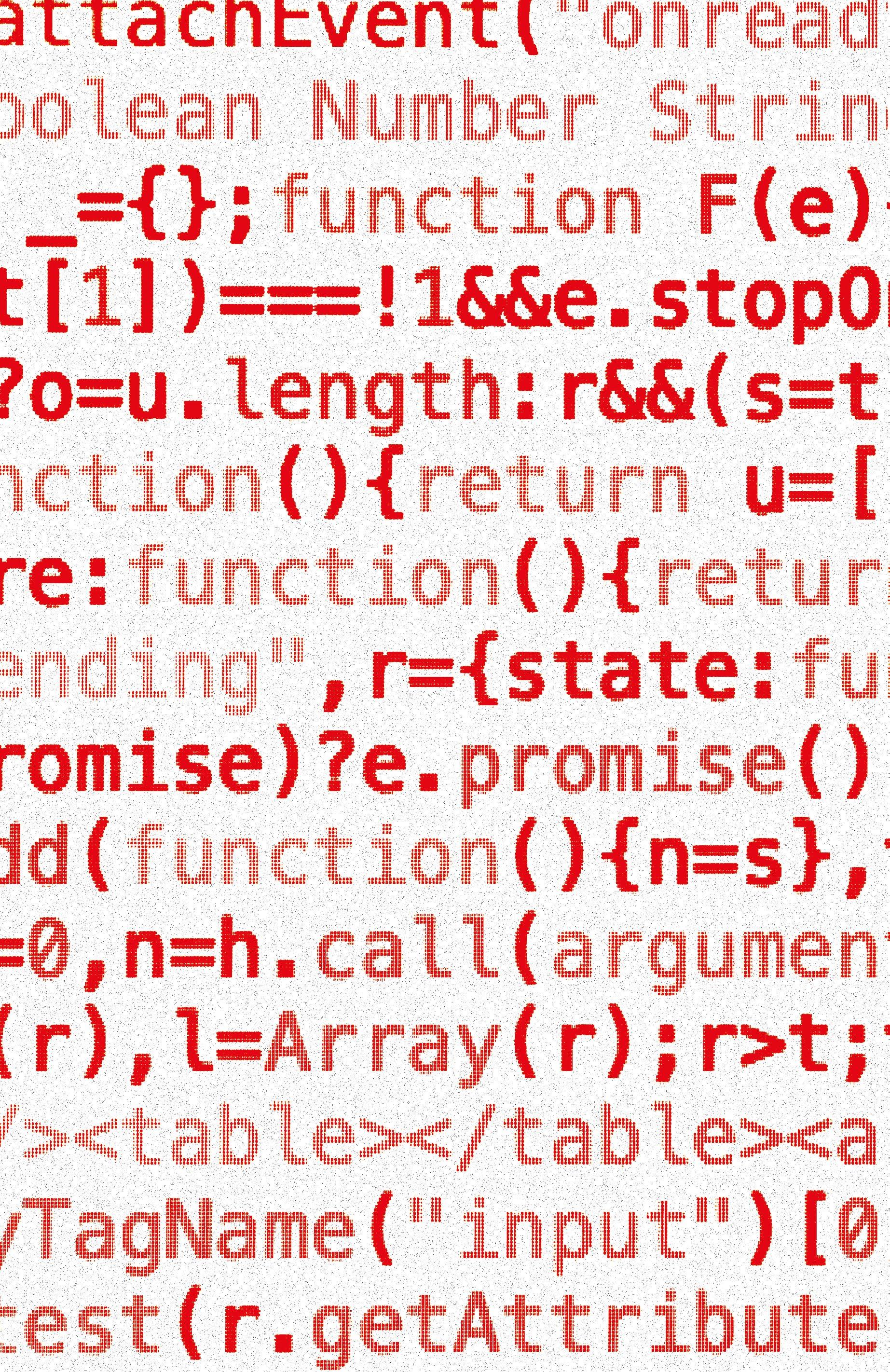


Opinions
32
images. But with the outrage came the questions – how is this allowed? How can this be regulated? Where is the line to be drawn with AI?
This isn’t the first time that AI-generated pornographic images have been circulated. It’s not only celebrities that have been affected, either – everyday people, too,
are victims of deepfakes, including children; last year, thousands of realistic AI-generated child sex abuse images were discovered, as reported by Ars Technica. Even today, growing in popularity, is a website that uses AI to undress women if given any picture of them, even fully clothed. This is a problem that has been going on for years.
investigate other options.

At the time of writing in February 2024, there are no official laws in the UK, or federal laws in the USA, that regulate AI-generated porn or deepfakes. There have certainly been discussions that have led to some changes –The Guardian reported in June 2023 that sharing deepfake porn is to be criminalised, and ten US states (the first being Virginia, in 2019) have passed laws that ban it but without a strict, definitive law, it’s easy for criminals and creeps to find loopholes that make these images tough to fight against. In Taylor Swift’s case, Tennessee, where she lives, doesn’t have a specific law that protects her, so she will need to
Luckily for Taylor, though, she has the cash and resources that allow her to explore these other options. She has legal teams, PR teams, and did I mention so much money that, without taking away from how distressing something like this is for her personally, she’s in a much more privileged position than the other women and girls who have been victimised by deepfakes and AI porn.
So, what does everyone else do? Wait for a law to be passed, and just hope they don’t become a victim of AI porn? If they do, just quietly suffer the consequences, that could range from embarrassment to losing a job? Hope that, one day, the perpetrators of these crimes will be placed on the sex offenders’ register, or better yet, thrown behind bars?
With conviction rates for sexual abuse that takes place in real life already being concerningly low (that is when it’s even reported), it’s, once again, a terrible time to exist as a woman. You can’t be safe on the street. You can’t be safe if you do so much as post a selfie online. Someone deepfakes you, and this “naked” image of you is preserved on the internet forever.
In Taylor’s words, this is why we can’t have nice things.
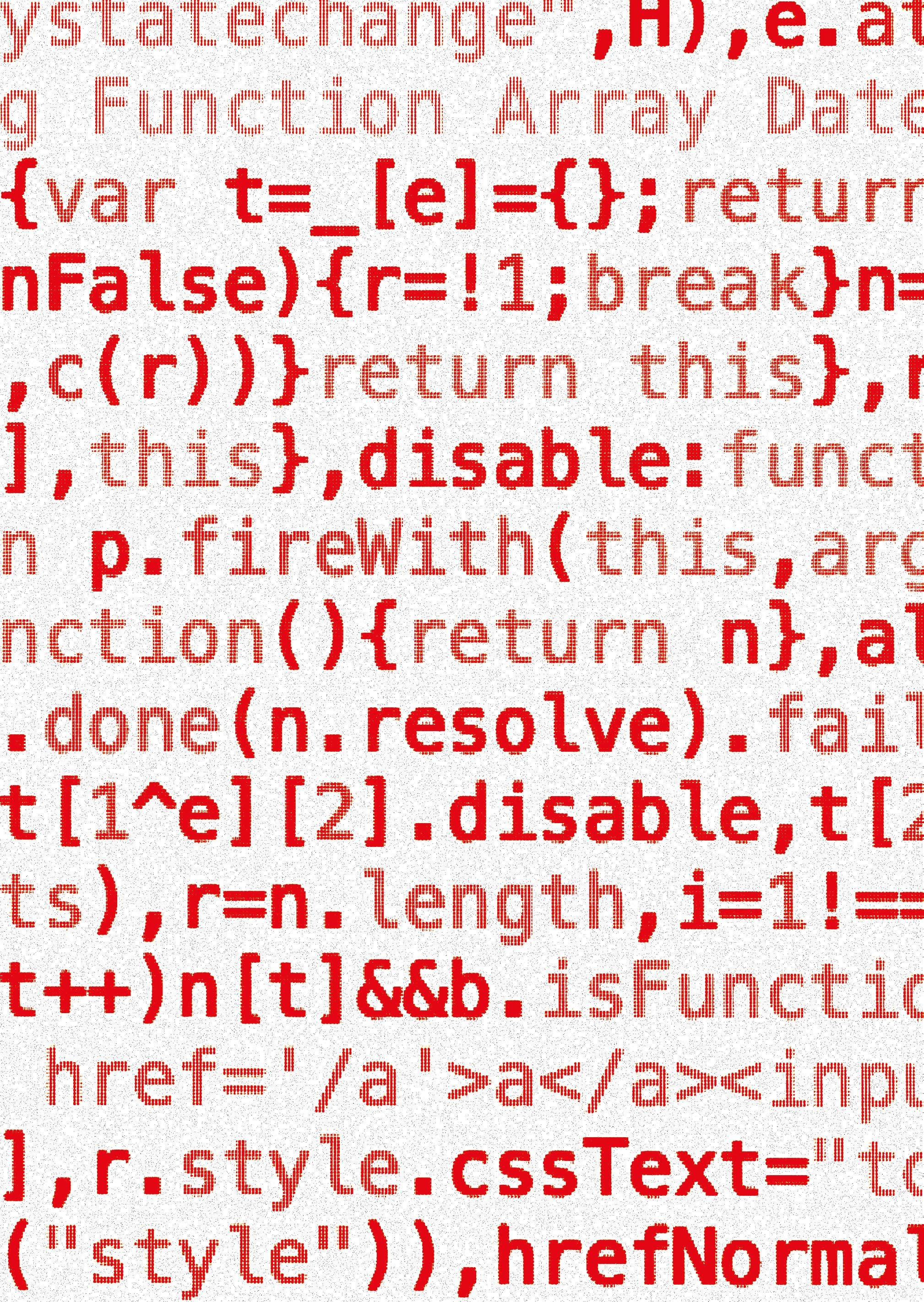

Opinions 33 Design: Fiona Howard
Words: Hannah Hamilton, Design: Jasper Napier
Yes, You Were.
I think we ought to grieve more.
Not just for the people and things we lose, but for ourselves. Don’t misunderstand, I’m not suggesting an en-masse pity party, only that we allow our past-selves and the selves-that-could-have-been the respect they deserve.
I think now, before I wax further lyrical, is a good time to define what I mean by grieve in this context. In the purely logical sense, grief is a strong emotional suffering in response to loss, usually a death. I hope that you have not felt this way, but I think the majority will know something of what I mean. Few emotions achieve such enormity that they merit becoming a verb. You can love, you can hate, you cannot sad (grammatically, anyway, otherwise I sad all the time), but you can grieve.
It’s not just an emotion, it’s a process.
Vital, awful, and so often pushed aside, grief demands to be felt whether you give it time or not. All the more reason to allow ourselves to go through it, and if you are coping with a loss, I sincerely hope you go through it as gently as can be done.
When we grieve, we work towards the resolution of a tumultuous heart, which I believe all of us come to have at some point in life. In part, I think we are always grieving. Not of someone or something outside of us, but of what we were and what we might have been.
For childhood, an ex-relationship, a former nickname, a beloved bedroom, or perhaps even a dream we once had. You don’t need to be unhappy with your life as is to miss what was. Sometimes it is as simple as grieving the time gone.
There’s a lot of pressure to put positivity front and center. We are encouraged to be grateful for what we have, and not to lament what came before. It makes sense, because sadness is so often misunderstood as something terrible. All emotions are, however, just emotions. Were we to let ourself feel them, they would do no more than be felt.
Were we to let ourselves grieve the people we used to be, the people we might have become had things been different, it might encourage within us a little more empathy towards who we are now. I think we ought to grieve, to quell our tumultuous hearts.
34 Opinions
!
CONTENT WARNING: GRIEF, LOSS

MAILLE
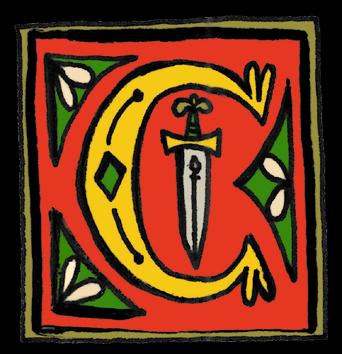
hainmail, mail, or maille as it can be called, is a type of body armour worn from the 4th/3rd century B.C. to roughly the 16th century A.D in Western Europe and 17th century in Eastern Europe. Do not think that maille was solely worn in the west; Japan was still using maille as a method protection up until the 19th Century A.D. Maille itself is made of metal rings, iron or steel specifically, and acts like a Kevlar vest; dispersing the energy of impacts against it throughout the garment. The reason that it works like this is due to its method of construction. When hit, the maille rings go rigid as they are forced further apart others that they are connected to, with this rigidity continuing across the general area where the blow was struck, sucking the energy out of the potentially harmful blow to the wearer.
Some forces, however, are better at getting through maille than others. Maille is very effective at stopping slashing/cutting impacts from a knife or a one-handed sword but can struggle with piercing impacts from most weapons designed for stabbing, like

spears. Against blunt force impacts maille is rather ineffective as the linked rings cannot dissipate the energy quickly enough. If enough force is used, maille links can be ripped away from each other or split in half if the rivet gives out.
Maille can be made in two main ways, either by butting the rings together or riveting the rings together. Both methods have their own strengths and weaknesses. Butted rings are simply bent so that each end of the ring meets. Butted maille armour is much faster to make but is less resistant to strong impacts and more likely to break. Riveted maille, on the other hand, is stronger than butted maille, due to the reinforcing rivet, but takes more time to produce and is often more difficult to repair. Granted it won’t need repaired as often. Making maille in either way is a tedious affair. Requiring along the lines of 30,000 rings for a full maille hauberk (a hauberk covers the body, arms, knees and thighs) or 2 kilometres (1.24 Miles) of wire for the sake of comparison.
Maille can still be found in the world today and not just in the hands of reenactors who like getting hit by sticks.
Science & Tech 35 Words: Murdo Myles, Photography: Gabriella Clare Marino, Design: Agne Irbe
Senior Team
Senior Editorial Team
Photography Team


Editor-in-Chief
Roshni Baillie
Dep. Editor-in-Chief
Mariya Georgieva
Creative Directors
Luna Jezzard
Afia Zaman
Lilian Truong
Website Manager
Benjamin Arthur
Managing Editors
Rachel Goodman
James McLeish

Katherine Donaghy
Patryk Dybalski
Daniel Somoghi
Senior Feature Editor
Bronte Chalmers
Alexander Stewart
Afia Zaman
Illustration Team
Section Editors & Publishing

Cover Artist

Marie Pape
Phiphi Tran
Emma Vind Publishing The Magdalen is published by Dundee University Student Association (DUSA).

The gorgeous Cover Art for Issue 105 was done by one of our incredible Illustrators; Mia Duffy!
@themagdalenmag TheMagdalenMagazine Join our team! If you're a UoD or Abertay student and have a passion for design or writing, we’d love to hear from you! TheMagdalenMagazine @themagdalenmag www.themagdalen.co.uk Connect with us Online!
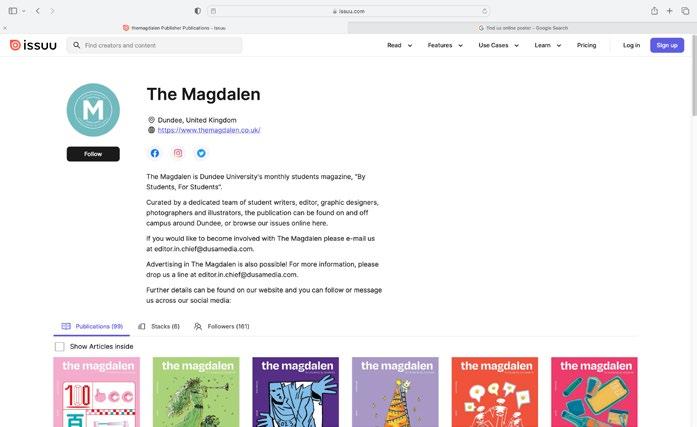


Love the magdalen? Not on Campus? No Worries! Never miss out on a second of the action. Find EVERY SINGLE issue of the magdalen EVER! 100% FREE! issuu.com/ themagdalen @
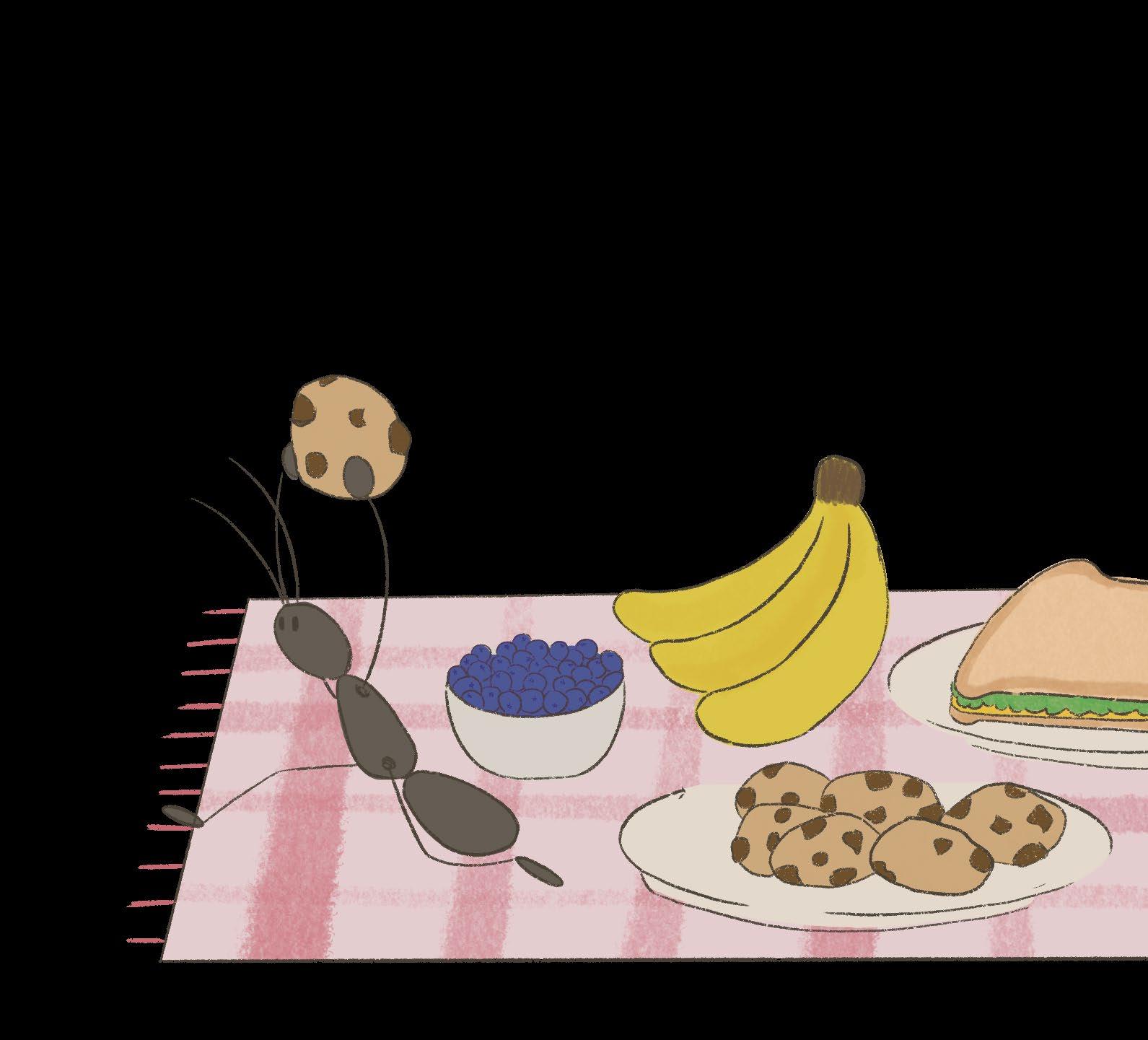
What's on?
Ellen K Levy –Seeing Through Tower Foyer Gallery
Sukaina Kubba Exhibition DCA 27thApril 4th August 19th June
6thApril Hotchpotch Dundee
8th May
6:30PM, Blend



































 Design: Cameron Tucker
Design: Cameron Tucker

























































